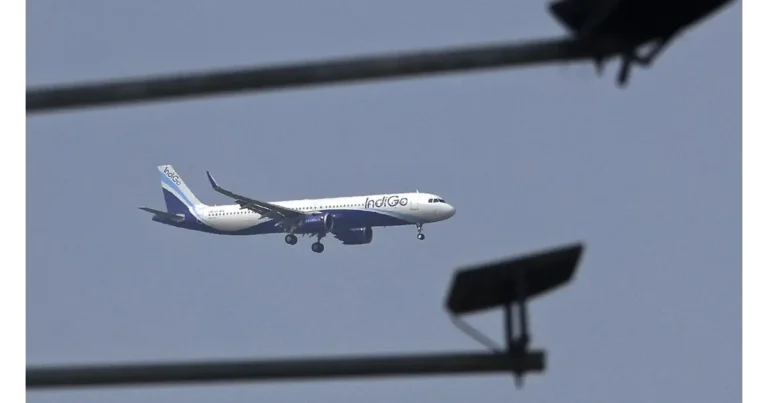
The Capital Chokes Again After Diwali
As the festive lights of Diwali fade, Delhi once again finds itself under a thick blanket of smog. The city’s air quality has plummeted, with PM2.5 levels reaching their highest since January. The alarming spike in pollution has prompted the Delhi government to explore every possible measure to reduce the toxic haze — including an ambitious plan to induce artificial rainfall through cloud seeding.
A Race Against Time: Delhi’s First Cloud Seeding Experiment
While cloud seeding has been tested in various parts of India and the world, deploying it over a dense metropolis like Delhi comes with unique challenges. The city’s skies have recently lacked the kind of moisture-rich clouds essential for successful seeding, causing delays. However, Chief Minister Rekha Gupta announced that if weather conditions remain favourable, Delhi could witness its first artificial rain by October 29, 2025.
Understanding Cloud Seeding
What Is Cloud Seeding?
Cloud seeding is a scientific weather modification technique designed to stimulate rainfall by dispersing specific particles into the atmosphere. These particles act as nuclei around which water vapour condenses, eventually forming raindrops that fall to the ground. Common seeding agents include silver iodide, dry ice, and salt-based compounds such as sodium chloride.
The Two Main Methods
1. Hygroscopic Cloud Seeding: This method targets warm, moisture-laden clouds. Salt particles like potassium chloride or sodium chloride are released to encourage droplet growth, eventually leading to rainfall.
2. Glaciogenic Cloud Seeding: This involves injecting substances like silver iodide or dry ice into cold, supercooled clouds. The particles help form ice crystals that melt into raindrops as they descend.
Technology Behind Delhi’s Project
Delhi’s operation uses a modified Cessna-206H aircraft equipped with flares that release seeding agents at calculated altitudes. The project is being conducted with technical support from IIT Kanpur, in collaboration with the Delhi Environment Department.
Delhi’s First Trial Flight
The first test flight recently took off from Kanpur, heading toward Delhi via Meerut. The mission verified the aircraft’s modifications, flare deployment systems, and coordination between the ground and flight teams. Chief Minister Rekha Gupta posted on X (formerly Twitter):
“For the first time in Delhi, preparations have been completed to induce artificial rain through cloud seeding — a significant milestone in our fight against air pollution.”
She emphasized that if the Indian Meteorological Department’s forecasts prove accurate, the capital might soon witness its first-ever artificial rain event.
Why the Project Faced Delays
Cloud seeding depends heavily on the presence of moisture-rich clouds. Experts from IIT Kanpur explain that effective seeding requires clouds with at least 50% humidity, positioned between 500 and 6,000 meters above ground. Unfortunately, Delhi’s recent weather has offered thin, dry cloud layers — delaying the project’s launch.
Can Artificial Rain Really Reduce Pollution?
Artificial or natural rainfall can indeed help wash particulate matter like PM2.5 and PM10 out of the atmosphere, temporarily improving the Air Quality Index (AQI). For instance, if the AQI is at a “very poor” level (300–400), post-rain conditions might drop it to “poor” or even “moderate.” However, the improvement is typically short-lived, as pollution sources quickly replenish airborne particles.
Cloud Seeding Efforts in India
India has a long, though mixed, history with cloud seeding. States such as Maharashtra, Karnataka, Andhra Pradesh, Gujarat, and Tamil Nadu have used the technique to combat drought and support agriculture. The Indian Institute of Tropical Meteorology initiated the first trials in 1972, and the CAIPEEX (Cloud Aerosol Interaction and Precipitation Enhancement Experiment) program later observed a 15–20% increase in rainfall under optimal conditions.
Challenges and Limitations
Meteorological Constraints
Delhi’s late-autumn skies rarely produce moisture-heavy clouds long enough to support sustained seeding operations.
Short-Term Relief
Even when successful, cloud seeding offers only temporary improvement in air quality. Without continuous pollution control measures, smog levels tend to rebound within days.
Scientific Uncertainty
It remains difficult to prove whether rainfall resulted from seeding or natural weather variations, especially in urban settings where controlled experiments are nearly impossible. Both the Central Pollution Control Board (CPCB) and the Commission for Air Quality Management (CAQM) have stressed that cloud seeding should be viewed as an experimental measure, not a permanent solution to Delhi’s pollution crisis.







